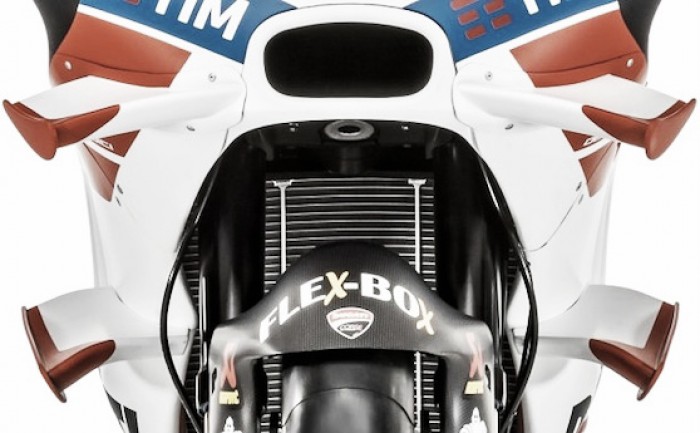It was announced on race day at the Assen GP that the wings that riders have used to keep the front end of the bikes down under hard acceleration will be banned as of next season.
Fans have watched in amazement as they have multiplied; riders have varying wings of all sorts of shapes and sizes and some even have several sets.
The safety and necessity of the wings has been questioned since Ducati first introduced them and it filtered through the other manufacturers; it even went as far as the Moto3 class but they were quickly banished.
Grand Prix Commission meeting held at Assen GP
The Grand Prix Commission met on June 25th at Assen and was made up of Messrs. Carmelo Ezpeleta (Dorna Chairman), Ignacio Verneda (FIM CEO), Herve Ponchoral (IRTA) and Takanao Tsubouchi (MSMA). Also present was Javier Alonso (Dorna) and Mike Trimby (IRTA) who was the Secretary of the meeting.
Technical regulations were discussed including the Aerodynamic Wings in the MotoGP class, Post-Race Noise Tests and Moto3 Safety Issues
All those present at the meeting agreed that the use of aerodynamic wings in the MotoGP should be banned. The effectiveness has been discussed by all of those who follow the MotoGP world championship series, and the safety questioned as pictures emerged from onboard the bikes of one wing poking Repsol Honda rider Marc Marquez in the back as they raced.
From 2017 the riders will not be permitted to use the wings, the actual regulation will replicate those for the Moto2 and Moto3 classes where the rule is already enforced. However, wings that meet current technical regulations are permitted to still be used for the remainder of this season.
Sound level tests no longer compulsory on top three finishers
Each of the three classes are made up of four stroke machinery and ever since the mandatory post-race noise test has never been failed.
After each race the highest placed three bikes are required to be routinely checked after the race but the Commission have decided to cancel this with immediate effect. The Technical Director who completes the test is still permitted to conduct noise tests at his discretion.
Moto3 Honda teams have now been permitted to replace the inlet valve springs on their engines but under the supervision of the technical staff. This change will take place at the next round in Saschenring, Germany before the race on 17th July. Mahindra are also permitted to replace the oil ring on one Moto3 engine that was leaking oil, again it is to be supervised by technical officials.





































